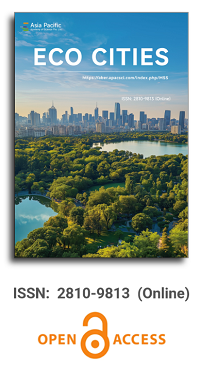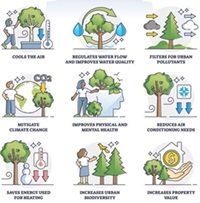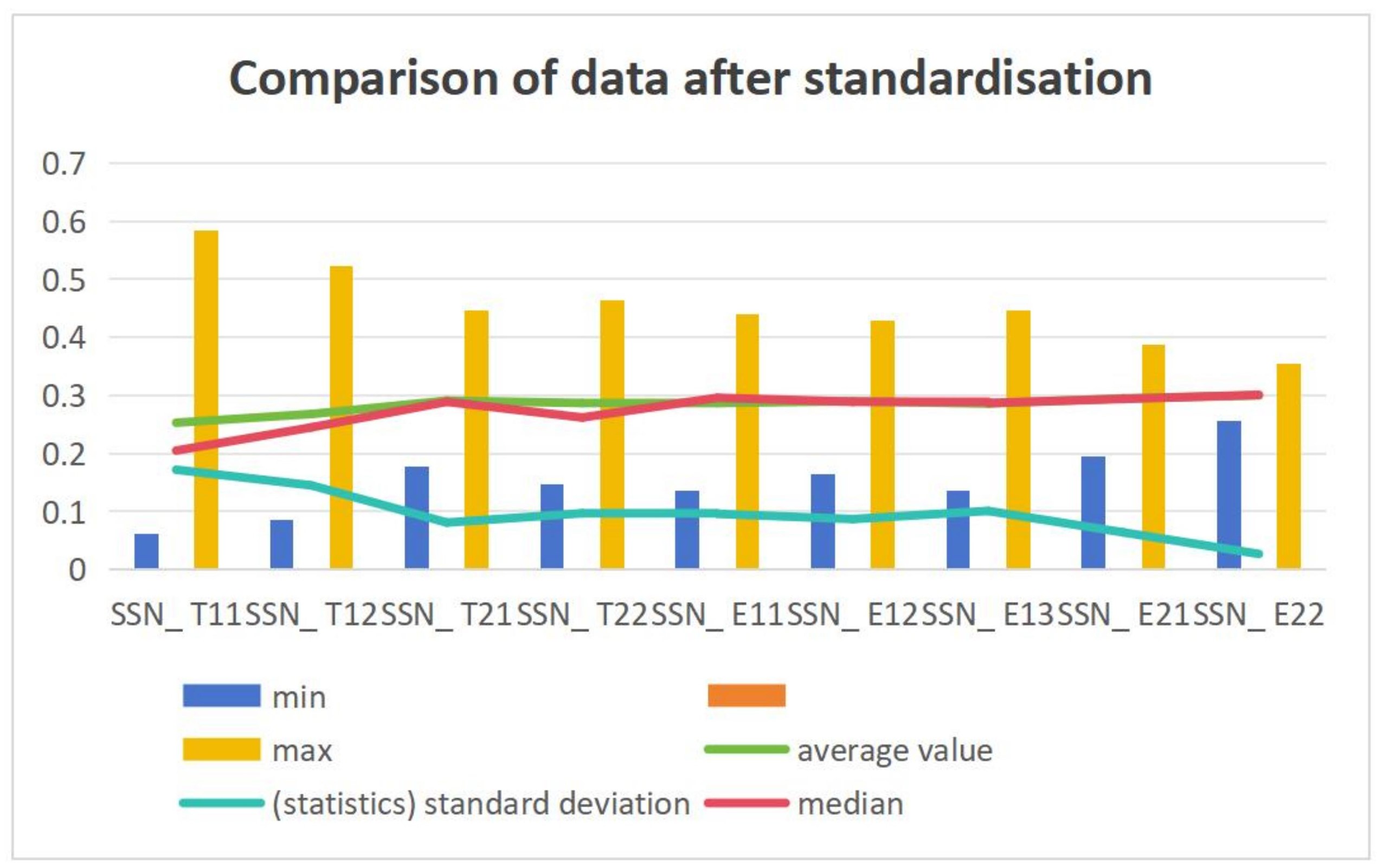


Volume 4, Issue 2 highlights how cities overcome numerous challenges to achieve sustainable development. The three most important factors influencing urban sustainable development are urban transportation, the environment, and population. This issue proposes various solutions, such as improving travel planning and utilizing digital technologies, to mitigate the impact of the mentioned problems on urban sustainable development. And analyzing the factors that influence urban sustainable development can provide useful information for urban managers' decision-making, effectively advancing city sustainability.
Issue release: 30 December 2023
China’s efforts and decisions to phase out coal will shape global endeavors in addressing climate change in the upcoming decades. This study investigates the action logic and interactions among different stakeholders, including the central government, local government, coal enterprises, and mine workers, in the case of Chongqing to gain valuable insights into existing institutional and policy challenges. Our results demonstrate that: First, the provincial government is the key to managing and implementing the local coal transitions, its motivation for coal transition, however, may not always align with the nation’s overall priorities. This highlights the need for a top-down coal transition policy to address the mismatched incentives among various participants. Second, Chongqing’s successful experience in maintaining economic development and whole employment demonstrates the possibility of adopting a rapid coal closure in places with similar resource endowments and industrial structures. Chongqing’s collaborative approach to transferring social responsibilities to local governments also serves as a valuable model that may apply to others’ contexts. Lastly, it is crucial to make context-based policy adjustments and establish an integrated and independent governance system when pursuing a rapid, efficient, and safe coal phase-out.
Issue release: 30 December 2023
Indian cities are becoming more and more populated, and the technological, environmental, social, political, and economic infrastructure of those cities is deteriorating, necessitating the development of more innovative methods to enhance public utilities and services. The growth of smart cities encourages the creation of a stable, networked, and sustainable metropolitan structure. The “100 Smart Cities Mission” was started by the Indian government to encourage planned development. However, there is also a literature of criticisms of the indicators used by the smart city mission. A thorough investigation is necessary to identify the critical infrastructure, important resources, and development patterns for smart city planning. The purpose of my study is to achieve and move towards Smart City Mission goals in a holistic framework. This research paper proposes a weighted criteria to assess the eligibility factors identified from the literature studies of the Smart City Mission, to analyze the complex relationships among the indicators, to develop a holistic approach, and to classify factors based on the drivers of dependence and implementation. The findings of this study shed light on the key drivers and barriers to the implementation of smart city initiatives. The DEMATEL method provided a valuable tool for analyzing the complex interrelationships between different factors and identifying the most influential drivers. The results can guide policymakers, city managers, and other stakeholders in developing more effective strategies for smart city implementation. However, the study also highlights the need for further research to explore the context-specific factors that may affect the drivers of smart city implementation in different regions and cities. Overall, this study contributes to the growing body of literature on smart cities and provides practical insights for decision-makers seeking to promote sustainable and inclusive urban development.
Issue release: 30 December 2023
Transportation is fundamental to shaping urban form and quality of life. The transport sector contributes to a quarter of global GHG emissions. It is integral to countries’ Nationally Determined Contributions (NDCs) to mitigate global warming or control warming beyond 2 ℃ or 1.5 ℃ above the pre-industrial level. Climate change mitigation in the transport sector demands a tailored approach for cities of the global south—recently urbanizing with increased dependence on motorization—incorporating social aspects of sustainability. The study examines the delivery of climate change mitigation and Sustainable Development Goals (SDG) in Udaipur’s passenger transport sector through six SDGs. Over and above the business-as-usual scenario, the two scenarios presented are the technology scenario, which recalibrates Udaipur’s available low-carbon mobility plan, and the SDG scenario, which addresses social transformations by applying assumptions derived from the primary survey in the city. The socially sensitive SDG scenario prioritizes the mobility demands of those with low or no mobility. It also enhances mobility by retaining the share of non-motorized transport (NMT), intermediate public transport (IPT), and public transport (PT) and regulating excessive use of private motorized vehicles. However, the SDG scenario causes a 26% increase in the vehicle kilometer traveled (VKT), a 24% increase in CO2 emissions, and a 29% decrease in other GHG emissions over the Technology Scenario.
Issue release: 30 December 2023
Issue release: 30 December 2023
Climate change poses significant challenges to Malaysian cities, including heat stress, which high humidity and the urban heat island effect exacerbate. While trees effectively reduce temperatures and improve microclimates, potential sensitivities to climate change impacts require careful species selection. Experts assessed the resilience of 220 tree species from urban and rural areas of Malaysia using eight criteria, based on a list compiled from four sources. We then categorised the species by sensitivity for four urban landscape types. Saltwater sensitivity had the highest proportion of sensitive species, followed by inundation sensitivity. Considering regional climate projections, planners should prioritise species with low inundation sensitivity. Data availability for saltwater, inundation, and high-temperature sensitivities was limited but adequate for the remaining criteria, with susceptibility to predation, parasitism, or disease, and sensitivity to storm conditions being of concern. Urban planners should integrate these criteria into decision-making to ensure climate-smart urban design. Given that our knowledge about the effects of climate change on tree species will advance and should be documented, we developed an open-collaborative online database that assists stakeholders in selecting suitable species for various sites in Malaysia. Moderators will review submissions to ensure consistent application of criteria and alignment between selected answers and supporting information. Assessors can contribute to quality control by voting for assessments they agree with. Our research emphasises the importance of proactively addressing climate change challenges in urban areas and underscores the value of informed decision-making to enhance the resilience of urban tree populations.
Issue release: 30 December 2023
This study provides a global perspective on the status of Blue-Green Infrastructure (BGI) and investigates the challenges and opportunities associated with its implementation in the urban landscape of India. The research delves into the multifaceted realm of BGI by first elucidating its current status worldwide. It explores how cities globally, amidst expanding urbanization and escalating environmental challenges, have recognized the importance of BGI as a pivotal strategy. The paper then narrows its focus to the specific challenges and opportunities confronting Indian cities in the adoption and integration of BGI. By conducting a comprehensive analysis of existing literature, global policy frameworks, and pertinent case studies, the study aims to unravel the complex interplay that governs BGI implementation in the Indian urban context. This dual approach ensures a nuanced understanding of both the global context and the specific challenges and opportunities faced by urban India in the realm of Blue-Green Infrastructure.
Issue release: 30 December 2023
The majority of the population in million-plus cities of India, especially the lower- and middle-income groups, are largely dependent on public transport (PT), intermediate public transport (IPT), and non-motorized transport (NMT) for their mobility. There is a need to assess such urban transport projects with regard to their contribution to various developmental goals, such as the Nationally Determined Contributions (NDCs) in the context of the Paris Agreement of 2015 and the Agenda 2030 of the Sustainable Development Goals (SDGs), independently as well as in their interactions with each other. Ministry of Housing and Urban Affairs, Government of India published a checklist for project appraisal of urban transport projects in 2015. This viewpoint proposes to expand the existing checklist for assessing public transport projects, i.e., BRTS and city bus services, IPT sector, i.e., auto-rickshaw, E-rickshaw, cycle-rickshaw, and shared mobility like Uber and Ola, and NMT infrastructure, i.e., walkways and cycle infrastructure to include parameters related to climate change mitigation, relevant SDGs targets, and participatory governance.

Chinese Academy of Sciences, China
Indexing & Archiving
Asia Pacific Academy of Science Pte. Ltd. (APACSCI) specializes in international journal publishing. APACSCI adopts the open access publishing model and provides an important communication bridge for academic groups whose interest fields include engineering, technology, medicine, computer, mathematics, agriculture and forestry, and environment.


 Open Access
Open Access

.jpg)

.jpg)



